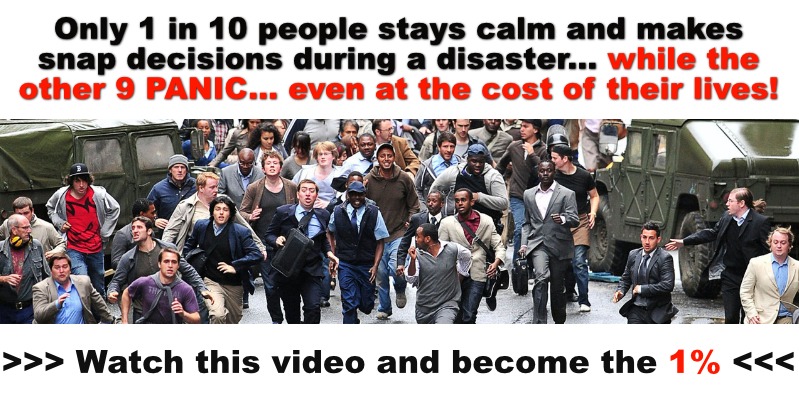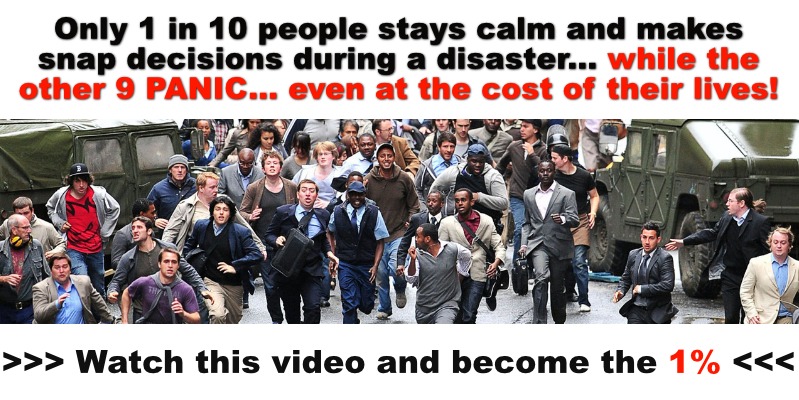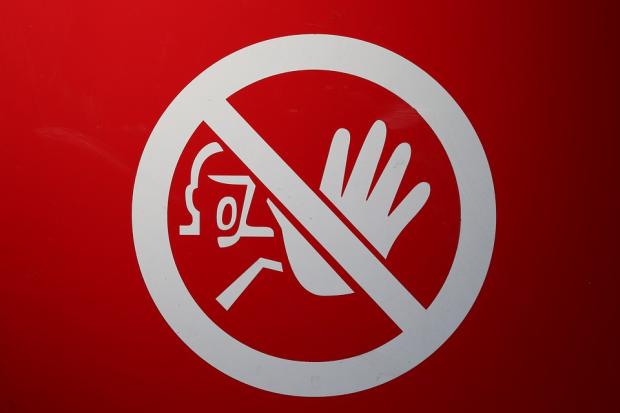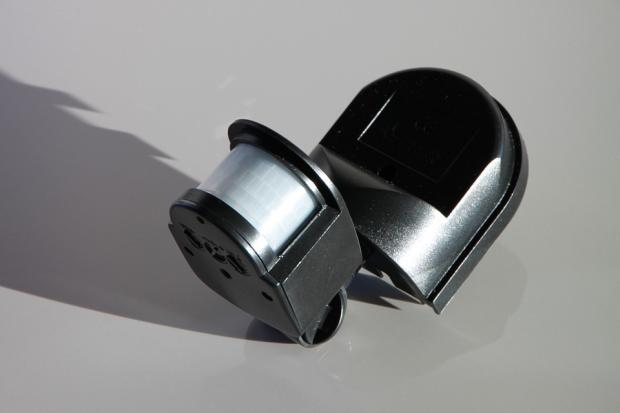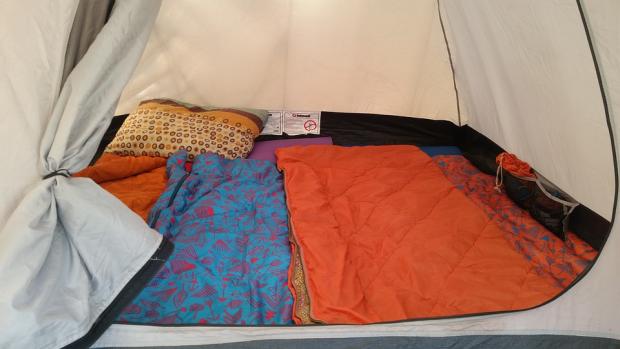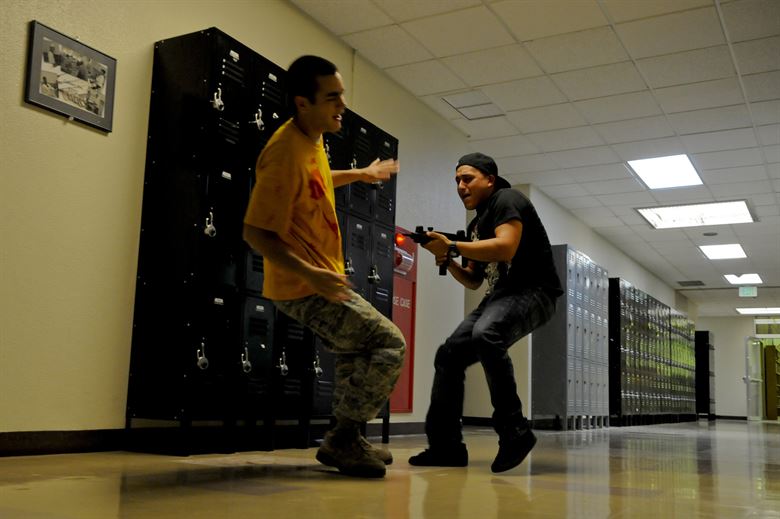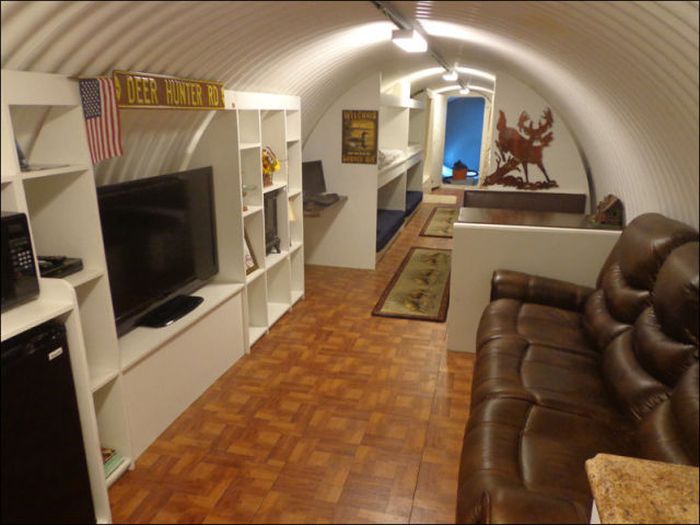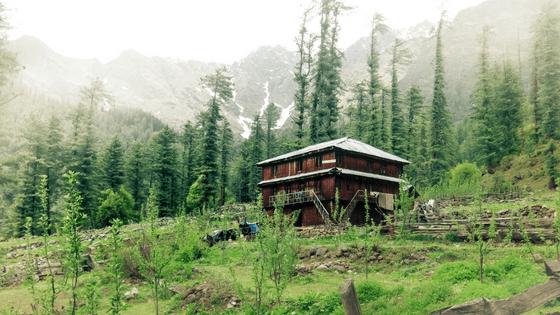Useful And Cheap Preps I Got At The Yard Sale
Prepping can be expensive. I get it. I’ve been at this a long time and have had just as many struggles in coming up with the money to pay for my own preps as anyone. That’s why I’m always looking for a bargain. If I can find a way to buy the things I need cheaper, I’ll take it. For that reason, I stop in at any interesting garage sales I can find.
Now, I’ve got to say that I’m not an avid garage sale fan. I can’t spend my whole Saturday going from garage sale to garage sale, getting all excited about the bargains I find. I’m more of the casual garage-saler, who stops in at one every once in a while.
But that’s why I like flea markets. Going to a flea market is like going to a couple hundred garage sales, all together in one place. That’s a whole lot more efficient, because you can park, walk through, make your purchase and be gone. I’m sure most women would think I’m nuts for my attitude; but hey, it works for me. If they want to spend their entire day Saturday at garage sales, that’s fine; I’ll spend mine doing other things.
Even so, I had never gone to the local flea market with the purpose of just seeing what I could find to help out my prepping. Usually when I go, I’m looking for a particular item, like something I need for the house. So, while I have had great results getting chandeliers and faucets at the flea market, I really didn’t know how well I would do looking for prepping gear.
That seemed like a good idea to me, so after stuffing my wallet with a few hundred dollars, I headed off to my local flea market, to see what I could find.
A Word of Caution
Before talking about what I found, let me give you a word or two of caution. I don’t know how things are where you live; but here, the vendors at flea markets aren’t known as great paragons of virtue. Many of them use the flea market as their primary source of income, and they aren’t too particular about where their products come from. Rumor has it that a lot of the “new” merchandise at the flea markets around here really is new, because it was shoplifted. That’s especially true of clothing.
I don’t know if that rumor is true or not and I haven’t tried to find out. I merely mention it as a point for you to consider. Some of the new items I found were offered for what seemed to be less than wholesale rates. That makes it real easy to believe the rumors. So if that’s an issue for you, you might want to reconsider, before going to your local flea market.
But with that out of the way, here’s what I found:
Machete – $5.00
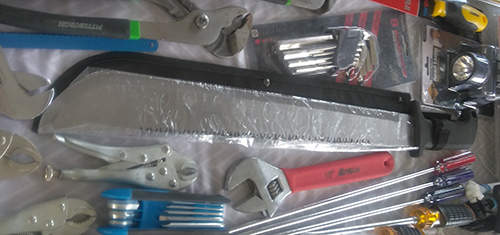
One of the very first things I found was a machete. You may not be all that familiar with the machete as a survival tool, but I’ve spent a lot of time in Mexico, where it is a very common tool. The machete can replace a hatchet, saw and shovel in your bug out bag and do so with less weight. This machete in particular had a very aggressive saw blade on the back edge, making it even better for cutting wood than just hacking at it. For $5.00, with the sheathe, it was a great deal.
One thing you’ve got to know about machetes though, is that they are all made of fairly soft steel. So, I don’t care how expensive a one you buy, you’re going to have to sharpen it regularly. Part of that is that the blade is not made of typical knife steel to keep it flexible. So just keep that in mind.
This same vendor (and a few others I saw which had machetes) also had a wide assortment of hand tools at excellent prices. While I’m sure they weren’t professional grade tools, if you don’t have a good collection of hand tools already, this is a cheap way to get them.
Carabineers – $2.00
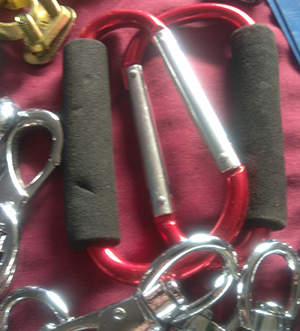
It seems that carabineers are everywhere these days. I found a couple of big ones, the kind that are marketed for carrying bags from the grocery store, complete with padded handle. They usually go for about $8.00, but I was able to pick these up for $2.00, about a fourth the price.
There are also some rather nice snap links shown in the bottom of that picture. While not as useful as the carabineers, they were only 50₵ each, a great price.
Chickens – $10
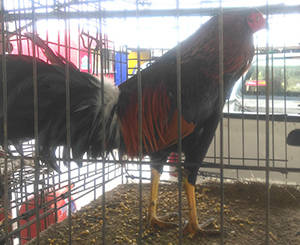
Here’s one that I wasn’t expecting to find; chickens. Now, these aren’t your ordinary cook-em-for-dinner chickens, otherwise known as “fryers;” these are “layers” who are ready to give you eggs every day. The average layer will give you eggs two days out of three, so having a half-dozen layers will ensure that each member of a family of four gets at least one egg per day. That might not be as satisfying as eating a steak, but at least it would put some protein in your diet.
One of the nice things about raising chickens is that they’ll eat literally anything. If you have a problem with insect infestations in your backyard, don’t worry about it; the chickens will find those insects quite appetizing and take care of them. But they’ll eat your backyard right down to the dirt, including your garden, if you let them.
Blankets – $5 – $8
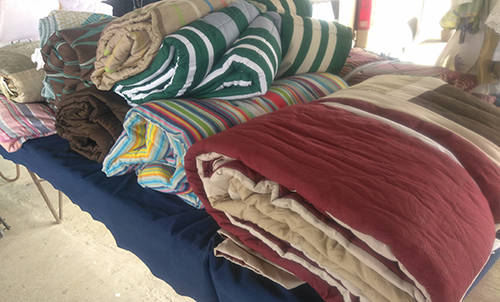
One lady there had a table where she was selling blankets. Now, that might not seem like much of a prepping tool, but if you live in the northern part of the country, you might want to stock up. If the power goes out and you don’t have heat in your home, you’re going to want to stack those blankets up on the beds, in order to keep warm. That’s the way our ancestors did it and it will work for us as well.
Lawn Mowers – $100
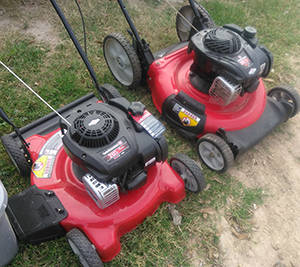
One guy was selling a couple of brand new lawn mowers for $100 each. I’m not familiar with this brand, but I liked the price. Granted, I don’t expect to be cutting my lawn if the brown stuff hits the rotary air movement device, but you can take the blade off of one of these, and turn it into a generator real quick. That makes it worth the money.
A little bit later I found another guy selling lawn mowers. This time they were Toro mowers, which is a well-known brand. But he wanted a bit more for them, at $150 a piece. Still a pretty good price.
Chainsaw – $80
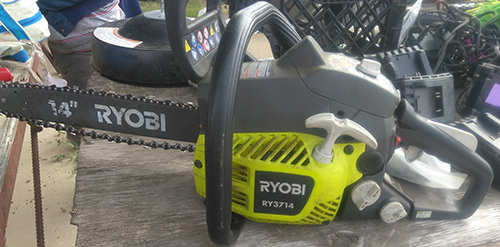
This was a good find; a slightly used Ryobi chain saw. He had a couple others, but this was the only one with a name brand that is widely recognized. If you’re going to be burning wood to keep your home heated, you’re going to need a chain saw. For $80, you can’t beat this, even though it’s only got a 14 inch bar and chain.
Granted, there are other chainsaws out there with larger engines and longer chains. I’ve got one. But I also paid a whole lot more money for it. I didn’t buy this one, but I had the feeling I could have talked him down a bit on the price.
Bike & Wagon – $30 each
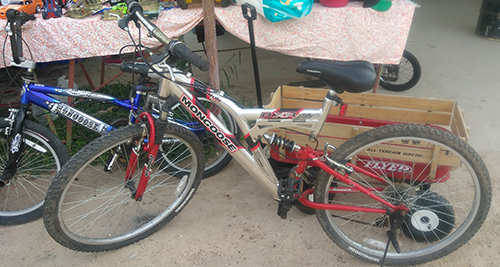
Here are a couple of things I was really hoping to find at the flea market; a bicycle and something to use as a cart. The bike might just become our prime means of transportation, should something happen to take down the grid. We can’t go back to horses and wagons, because there aren’t enough horses to go around. On the other hand, bikes are used world-wide as a primary means of transportation. They can also be used to transport goods, loading the bike up like a pack mule and pushing it along.
The wagon is great for moving things around your garden or can be hooked up to the back of the bike as a makeshift trailer. This one is nice, because it has wood sides, allowing it to carry more. I was hoping to find one of the larger ones that are sold for gardening, but I didn’t see one; so I’ll settle for this.
Generators – $200 each
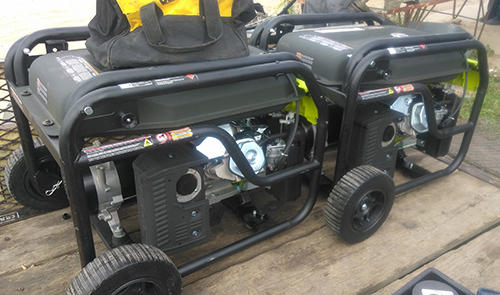
Remember what I said about not being sure of the honesty of the vendors? Well, this is a case in point. These are two brand-new Ryobi 6500 generators. They’re an older model that’s not in the stores anymore, but it’s clear by looking at their condition, they haven’t been used at all. At only $200 each, these are about $400 – $600 less than the new ones in the stores. I’ll have to say, this was the best deal that I found.
Yard and Garden Tools – $5 each
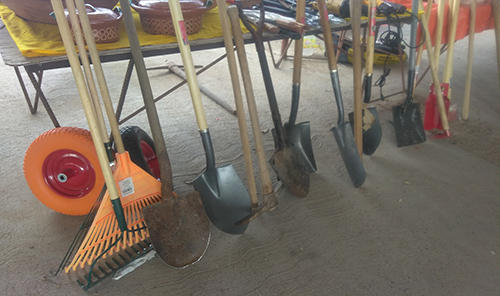
There were a number of guys there selling tools. Most were cheap hand tools. But I saw two guys who had a nice collection of yard and garden tools. Some of these are refurbished used tools, some homemade (especially the hoes) and others are new. Regardless, they were all going to $5 each; a great price. All seemed to be rugged enough to stand up, without breaking.
Barbecue Grill – $50
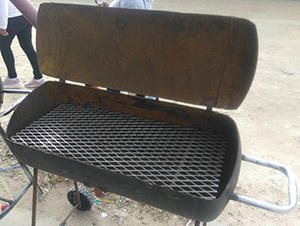
I don’t know about your part of the country, but where I live, barbecue is a big thing. Owning a commercially made barbecue grill isn’t the way to go. Anyone who owns one of those, just proves themselves to be an amateur griller. The real grill pros have homemade ones, whether they made them themselves or bought one that someone else made.
I’m not sure how he could make this for the price he was selling it for. It’s made out of some sort of a tank, possibly an old propane tank. Nevertheless, it’s a great grill and rather typical of the ones in this area. That expanded steel grill surface isn’t going to sag after it gets hot and the steel body of the grill isn’t going to burn through. This will serve as an excellent survival stove, when the gas goes out.
Fishing Rods – $15
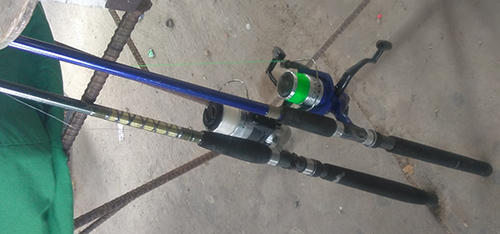
I was actually surprised that I didn’t see more fishing gear. Only two vendors had fishing rods and each only had two for sale. Nevertheless, these would be ideal for fishing the surf down at the beach or fishing off a pier. You might want something a bit lighter if you’re fishing in the Colorado Rockies.
Produce – Varied Prices
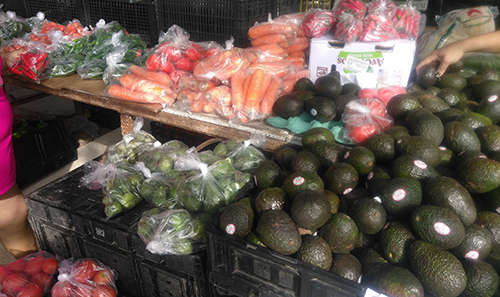
If you’re into canning, and what prepper isn’t, then the flea market may just be the place to pick up bushels of produce for canning. What’s available is going to vary by season; but it’s going to be priced a whole lot lower than the grocery store. Those avocados, for example, were four for a buck. Buying produce in bulk at the flea market is a great way to get enough to make canning more practical.
Knives – $10
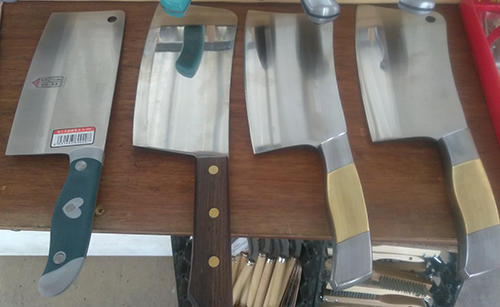
This wasn’t the best deal I saw, but it was still worth it. If we’re going to be hunting for eve a portion of our food, then we’d better have the right sort of cutlery for preparing it; something that few people think about. Most of us are so used to having a butcher prepare our kills; but that won’t happen if the grid is down or another serious disaster occurs.
I’ve seen cheaper meat cleavers than this; but then, they were so cheap that I wouldn’t want to own them. These seemed pretty well made and I think they would do the trick. Like machetes, the steel used in meat cleavers is a bit softer than what you find in other cutlery. That’s so that it doesn’t chip and break when you use it to cut through bones.
Personal Hygiene Supplies – $2
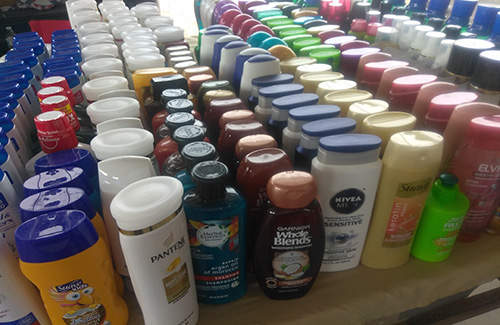
While not a tool, I did find a couple of tables where they were selling personal hygiene supplies for considerably less than you can buy them anywhere else. I know for a fact that a couple of those brands are rather costly, although there are cheap ones mixed in as well. The nice thing here, is that you can stock up for cheap.
Mexican Pharmaceuticals – Various Prices
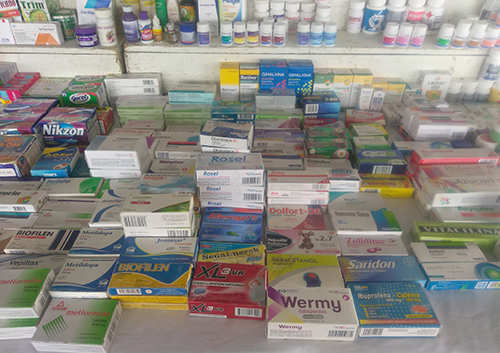
I don’t know if you can get them there, but here we have ready access to the Mexican pharmaceutical industry. Now, I have to say, this is probably illegal as all get out; but the prices are incredible. On the average, the prices here were about 20% or less of what you’d pay for the American equivalent. I’ve used Mexican pharmaceuticals for years and found them to be quite good.
The one thing here is that you have to know what you’re looking for. I doubt you recognize any of the names on the packages, because those are the Mexican trade names. But the package also has the generic name for the drug, usually right below the trade name. It is similar enough to the American generic name (usually with just an A or an O added at the end), that you can easily tell what’s what.
There’s a blue box of “Ibuprofieno” in the lower right-hand corner. That’s 400 mg Ibuprofen, double the strength of the Ibuprofen you buy at your favorite pharmacy. The package next to it, Wermy is for dealing with intestinal parasites. I also saw antibiotics and other common medicines which would be good to have on hand in an emergency.
What I Didn’t Find
While I found a lot of really great things in my trip to the flea market; there were a few things I was expecting to find, which I was surprised that I didn’t find. I suspect that I would find them if I went to the other flea market in the area, which is bigger or even if I went on another day, so I wouldn’t give up hope, just because I didn’t find them on this trip.
- Camping gear (I know I’ve seen this before at flea markets)
- Cast-iron cookware
- Candles (to melt down and make survival candles out of
- Five-gallon buckets
- Coats (I know they have those at the other flea market)
- Canning jars
- Oil-burning lamps
- Old sewing machine (to convert to pedal operation)
- Car batteries (for battery backup system)
- Backpacks (for bug out bags)
Nevertheless, the one thing I did prove to myself is that you can find some really great prepping gear at the local flea market, if you’re willing to take the time to push your way through the crowds. As I had suspected, this was much more efficient than going to garage sales, as I was able to check out a lot of stuff in one place, saving myself all the time of driving from one garage sale to the next.
Prepping can be expensive. I get it. I’ve been at this a long time and have had just as many struggles in coming up with the money to pay for











